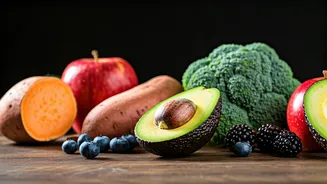Feta: Greek Delight
Feta cheese, a staple in Greek cuisine, shines as a good choice with its creamy texture and tangy flavor. It is made from sheep's milk or a combination
of sheep's and goat's milk. The fermentation process involved in its making gives it a beneficial dose of probiotics, which are good for your gut health. In terms of nutritional value, feta is a good source of calcium, contributing to bone health, and it also offers decent amounts of protein. It's often lower in fat compared to other cheeses, though it does contain sodium, so it's advisable to consume it in moderation if you're watching your sodium intake. Enjoy feta crumbled in salads, sprinkled on vegetables, or mixed into omelets for a burst of flavor and a nutritional boost.
Mozzarella: Soft Goodness
Mozzarella, available in both fresh and low-moisture versions, stands out for its mild flavor and versatile use in countless dishes. It's an excellent source of calcium, supporting the health of bones and teeth, and it provides a moderate amount of protein. Fresh mozzarella is lower in sodium than some other cheeses and contains beneficial probiotics. When choosing mozzarella, opt for low-fat or part-skim varieties to keep saturated fat intake in check. This cheese melts beautifully, making it perfect for pizzas, lasagna, and grilled cheese sandwiches. It can also be enjoyed fresh with tomatoes and basil for a simple, yet satisfying snack.
Cottage Cheese: High Protein
Cottage cheese is a nutritional powerhouse, celebrated for its high protein content and creamy texture. It is made from curds of milk, either skimmed or with varying levels of fat. The high protein in cottage cheese helps with muscle repair and keeps you feeling full, which can aid in weight management. It also provides calcium, essential for strong bones, and is relatively low in calories compared to many other cheeses. Cottage cheese is incredibly versatile; it can be enjoyed on its own, mixed with fruit, added to salads, or used as a protein-rich base for snacks. For the healthiest option, choose low-fat or non-fat varieties and watch your sodium intake, as some brands can be high in salt.
Ricotta: Versatile and Mild
Ricotta cheese, known for its soft, creamy consistency and mild flavor, is a good source of protein and calcium. It’s made from the whey leftover from making other cheeses, which gives it a slightly different nutritional profile. It's lower in sodium than many other cheeses and is relatively low in fat, especially if you opt for the part-skim or skim milk versions. Ricotta can be used in both sweet and savory dishes, such as lasagna, stuffed shells, or as a base for dips. It can also be mixed with honey and fruit for a light dessert. Its mild taste allows it to blend seamlessly into various recipes, adding a creamy texture and boosting the nutritional value of your meals.
Parmesan: Flavorful and Nutritious
Parmesan cheese, a hard, granular cheese with a rich, salty flavor, is a nutritional powerhouse that can add depth to various dishes. It's made from cow's milk and aged for a long time, which intensifies its flavor and makes it high in protein and calcium. Parmesan is also a good source of phosphorus, which works with calcium to build strong bones. Because of its intense flavor, a little bit of Parmesan goes a long way. Sprinkle it on pasta, salads, or soups to add a savory punch without overdoing the calories. Opt for fresh Parmesan and grate it yourself to avoid additives and preservatives. Always be mindful of portion sizes, as parmesan is high in sodium.
Swiss: Nutty and Healthy
Swiss cheese, distinguished by its characteristic holes and mild, nutty flavor, offers a variety of health benefits. It is a good source of protein, helping to keep you full and supporting muscle health, and it's rich in calcium, crucial for strong bones. Swiss cheese is also known for being relatively low in sodium compared to some other varieties. It also contains vitamin B12, important for nerve function and the production of red blood cells. Enjoy Swiss cheese in sandwiches, salads, or melted in a variety of dishes. Due to its balanced nutritional profile, Swiss cheese can be a healthy addition to a balanced diet, offering both flavor and essential nutrients.
Goat Cheese: Tangy Treat
Goat cheese, also known as chèvre, stands out for its tangy flavor and creamy texture. It is made from goat's milk and is often softer than cow's milk cheeses, making it easy to spread and enjoy. Goat cheese is generally lower in lactose compared to many cow's milk cheeses, which makes it a good option for those who are sensitive to lactose. It provides a moderate amount of protein and calcium. The fat content in goat cheese varies depending on the type; however, it tends to be easier to digest compared to some cow's milk cheeses. Enjoy goat cheese in salads, on crackers, or in omelets. Pair it with honey or fruit for a balanced snack or appetizer.












